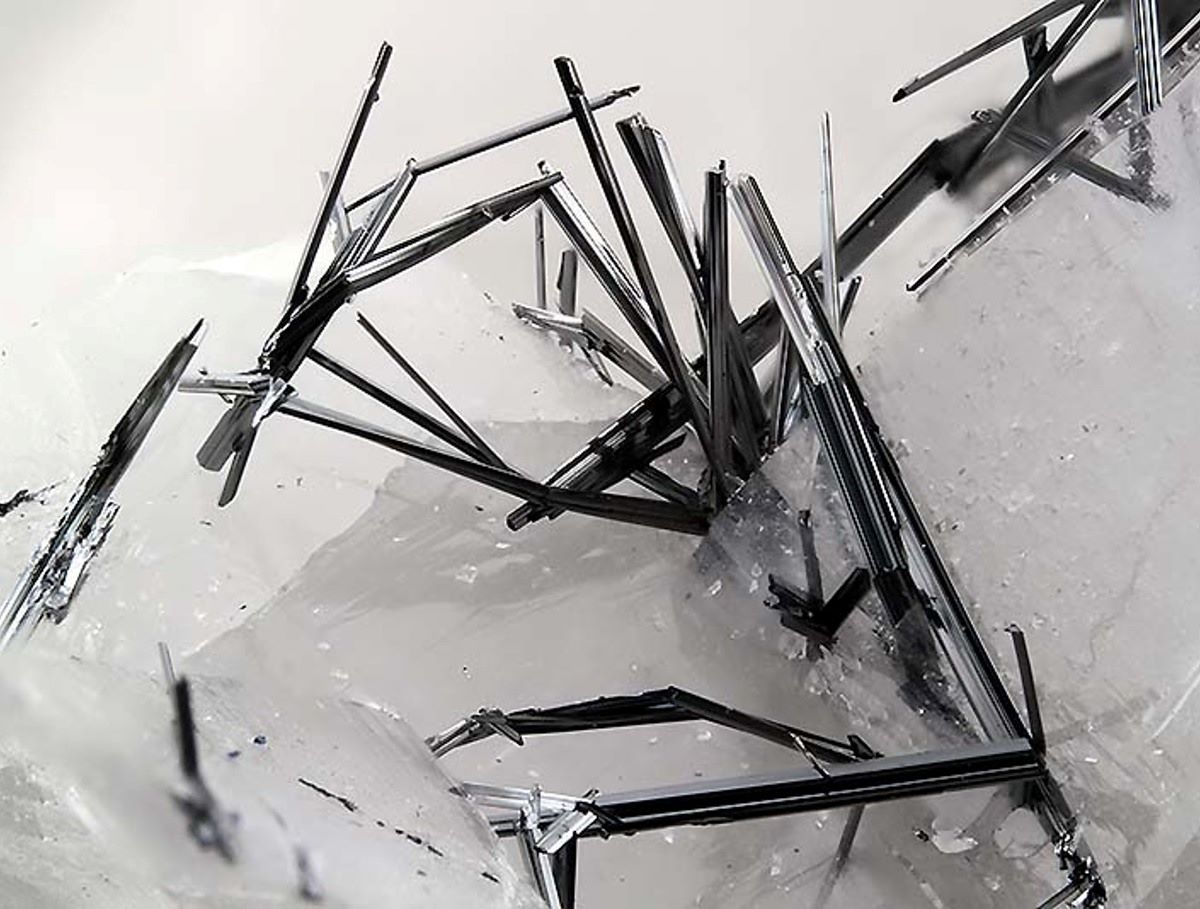
Meneghinite is a fascinating mineral that often goes unnoticed. But what exactly is it? Meneghinite is a lead antimony sulfide mineral, known for its metallic luster and unique crystal structure. Found in hydrothermal veins, it often appears alongside other minerals like galena and sphalerite. This mineral was named after Giuseppe Meneghini, an Italian mineralogist, in 1852. Its striking needle-like crystals can captivate any geology enthusiast. With a Mohs hardness of 2.5 to 3, it’s relatively soft, making it a collector's item rather than a practical tool. Ready to learn more? Here are 30 intriguing facts about Meneghinite that will deepen your appreciation for this remarkable mineral.
Key Takeaways:
- Meneghinite is a rare mineral with a rich history and unique properties, fascinating mineral collectors and scientists alike. It's primarily found in Italy, Bolivia, Japan, the United States, Mexico, Germany, Sweden, and Russia.
- While not widely used in industry, meneghinite holds significance for mineral collectors, geologists, and museums. It provides insights into geological history and the formation of hydrothermal veins, and can sometimes be used as an ore of lead and antimony.
What is Meneghinite?
Meneghinite is a fascinating mineral with a rich history and unique properties. Named after the Italian mineralogist Giuseppe Meneghini, this mineral has intrigued scientists and collectors alike. Here are some intriguing facts about meneghinite.
-
Meneghinite is a sulfosalt mineral composed primarily of lead, antimony, and sulfur.
-
It was first discovered in 1852 in Tuscany, Italy.
-
The mineral is named after Giuseppe Meneghini, an Italian geologist and paleontologist.
-
Meneghinite typically forms in hydrothermal veins and is often associated with other sulfide minerals.
-
It has a metallic luster and a dark gray to black color.
Physical Properties of Meneghinite
Understanding the physical properties of meneghinite can help in identifying and studying this mineral. Here are some key characteristics.
-
Meneghinite has a hardness of 2.5 on the Mohs scale, making it relatively soft.
-
The mineral has a specific gravity of approximately 6.3, indicating it is quite dense.
-
It exhibits a sub-conchoidal to uneven fracture, meaning it breaks with a somewhat curved but irregular surface.
-
Meneghinite is opaque, meaning light does not pass through it.
-
The streak of meneghinite, which is the color of its powdered form, is black.
Chemical Composition and Structure
The chemical makeup and structure of meneghinite are what make it unique among minerals. Here are some details.
-
Meneghinite's chemical formula is Pb13Sb7S23.
-
It belongs to the orthorhombic crystal system, which means its crystals are shaped like elongated rectangles.
-
The mineral's structure consists of complex chains of lead, antimony, and sulfur atoms.
-
Meneghinite often forms prismatic crystals, which are long and slender.
-
It can also occur in massive or granular forms, where the crystals are not easily distinguishable.
Occurrence and Locations
Meneghinite can be found in various locations around the world. Here are some notable places where it has been discovered.
-
Besides Italy, meneghinite has been found in Bolivia, particularly in the Potosí region.
-
It is also present in Japan, especially in the Akita Prefecture.
-
In the United States, meneghinite has been discovered in Colorado and California.
-
The mineral is also found in Mexico, particularly in the state of Chihuahua.
-
Other notable locations include Germany, Sweden, and Russia.
Uses and Significance
While meneghinite is not widely used in industry, it holds significance in other areas. Here are some interesting points.
-
Meneghinite is primarily of interest to mineral collectors due to its rarity and unique properties.
-
It is also studied by geologists and mineralogists to understand the formation of hydrothermal veins.
-
The mineral can provide insights into the geological history of the regions where it is found.
-
Meneghinite samples are often displayed in museums and educational institutions.
-
It can sometimes be used as an ore of lead and antimony, although this is not common.
Fun and Lesser-Known Facts
Here are some fun and lesser-known facts about meneghinite that might surprise you.
-
Meneghinite can sometimes be mistaken for other sulfide minerals like galena or bournonite due to its appearance.
-
The mineral's name is sometimes misspelled as "Meneghinite" instead of the correct "Meneghinite."
-
Meneghinite crystals can sometimes exhibit a striated pattern, which are fine parallel lines on their surfaces.
-
The mineral is often found in association with quartz, calcite, and other sulfide minerals.
-
Meneghinite is not radioactive, making it safe to handle for collectors and researchers.
Final Thoughts on Meneghinite
Meneghinite, a fascinating mineral, has captured the interest of geologists and collectors alike. Its unique properties, such as its metallic luster and lead-gray color, make it a standout in the mineral world. Found in various locations around the globe, including Italy and Japan, meneghinite offers a glimpse into the Earth's geological processes. Its composition, primarily of lead, antimony, and sulfur, adds to its intrigue. Whether you're a seasoned collector or just starting, meneghinite is a mineral worth exploring. Its rarity and distinctive characteristics make it a prized addition to any collection. So next time you come across this mineral, take a moment to appreciate its beauty and the story it tells about our planet's history. Happy collecting!
Frequently Asked Questions
Was this page helpful?
Our commitment to delivering trustworthy and engaging content is at the heart of what we do. Each fact on our site is contributed by real users like you, bringing a wealth of diverse insights and information. To ensure the highest standards of accuracy and reliability, our dedicated editors meticulously review each submission. This process guarantees that the facts we share are not only fascinating but also credible. Trust in our commitment to quality and authenticity as you explore and learn with us.
